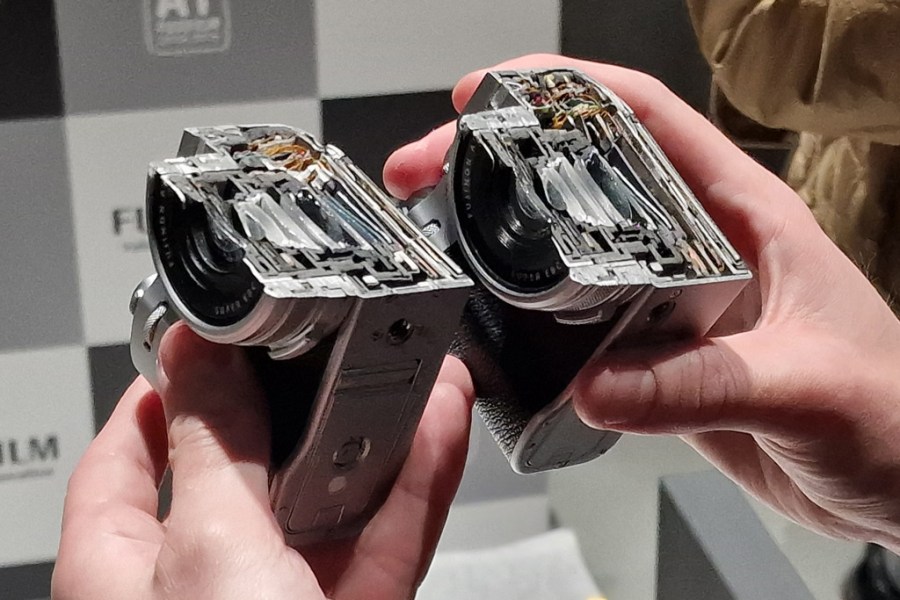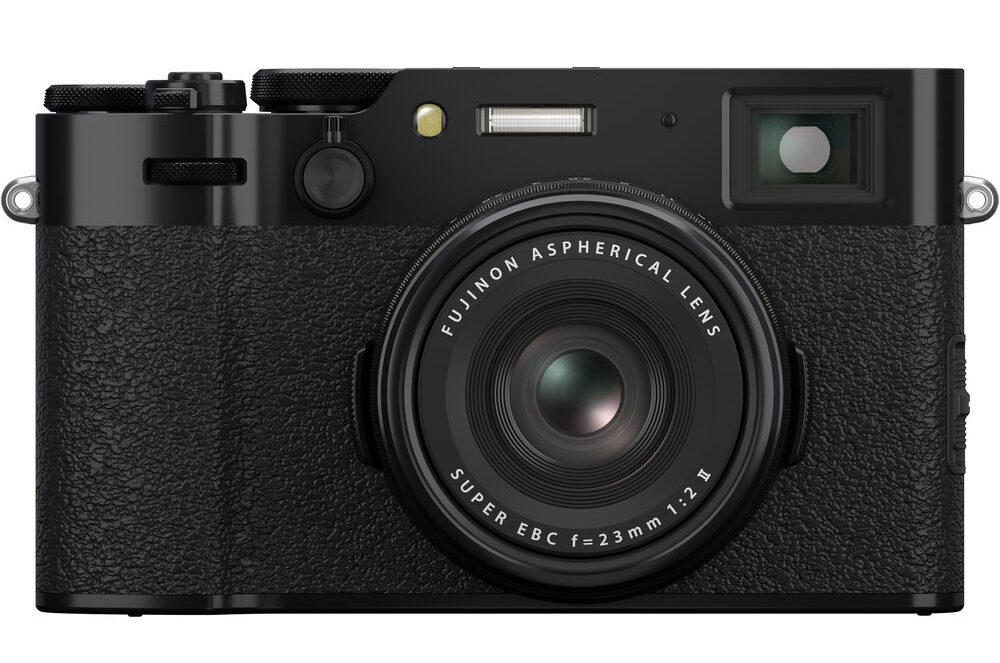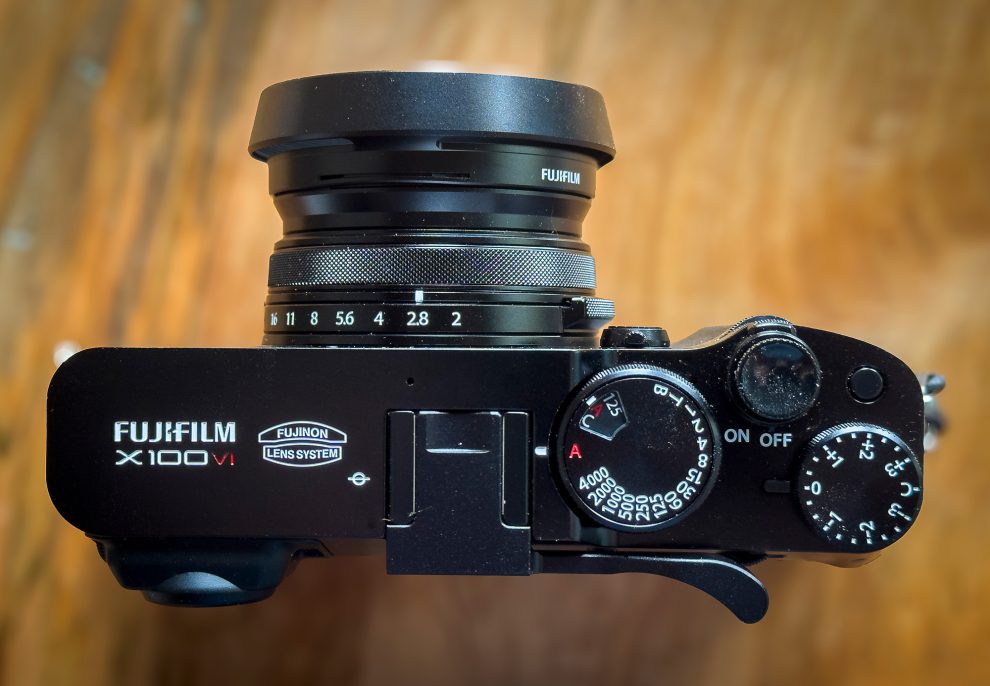A Timeless Legacy Evolves
The Fujifilm X100 series has carved a niche for itself in the hearts of street photographers and enthusiasts of premium compact cameras. The X100VI, the latest iteration in this iconic lineage, promises to refine the familiar formula while introducing some key improvements. Let’s delve into the design, performance upgrades, and potential benefits of this highly anticipated camera to see if it lives up to its heritage.

A Classic Look, Masterfully Crafted: Design and Build Quality
The X100VI retains the classic rangefinder design that has become synonymous with the X100 series. The minimalist aesthetic, with clean lines and a focus on physical dials, evokes a sense of retro charm. The camera body is constructed from a lightweight yet sturdy magnesium alloy, ensuring excellent build quality and durability. Fujifilm continues to offer the X100VI in two color options: black and silver, catering to various aesthetic preferences.
Here’s a quick comparison of the design with a popular competitor, the Ricoh GR IIIx:
| Feature | Fujifilm X100VI | Ricoh GR IIIx |
|---|---|---|
| Design Language | Classic rangefinder | Modern, minimalist |
| Lens | Fixed 23mm f/2.8 (equivalent) | Fixed 24mm f/2.8 (equivalent) |
| Viewfinder | Hybrid optical/electronic (OVF/EVF) | Electronic (EVF) only |
While both cameras offer a compact design with a fixed prime lens, the X100VI retains the unique hybrid viewfinder system, a feature not present in the Ricoh GR IIIx. This allows photographers to choose between a traditional optical viewfinder experience or a high-resolution electronic viewfinder for more precise framing.

Under the Hood: Performance Enhancements
The X100VI boasts several improvements under the hood. Here are some key upgrades:
- New Sensor: The X100VI features a new 40-megapixel X-Trans CMOS sensor, a significant jump from the 26-megapixel sensor of its predecessor. This translates to sharper images with improved detail capture, especially when cropping.
- Faster Processor: The X100VI utilizes the faster X-Processor 4, resulting in improved autofocus performance, faster burst shooting speeds (up to 11 frames per second), and quicker overall camera responsiveness.
- Image Stabilization: Most notably, the X100VI incorporates in-body image stabilization (IBIS) for the first time in the X100 series. This provides up to 6 stops of image stabilization, allowing for sharper handheld shots in low-light conditions or at slower shutter speeds.
Here’s a breakdown of the sensor and image stabilization compared to the previous generation X100V:
| Feature | Fujifilm X100VI | Fujifilm X100V |
|---|---|---|
| Sensor Resolution | 40 megapixels | 26 megapixels |
| Image Stabilization | In-body image stabilization (IBIS) | No image stabilization |
The increase in megapixel count and the addition of IBIS are significant upgrades, addressing some of the key limitations of the X100V. These improvements will be particularly appealing to photographers who desire sharper images and the ability to shoot confidently in low-light situations.

A Hybrid Viewfinder Experience: Refining the User Experience
The X100VI continues to offer the unique hybrid optical/electronic viewfinder (OVF/EVF) system that has become a hallmark of the X100 series. This allows photographers to toggle between a traditional optical viewfinder experience for a more natural framing experience, or a high-resolution electronic viewfinder (EVF) for more precise framing and access to shooting information. The EVF in the X100VI has also received a resolution bump, offering a clearer and more detailed view.
Here’s a quick comparison of the viewfinder system with a competitor:
| Feature | Fujifilm X100VI | Ricoh GR IIIx |
|---|---|---|
| Viewfinder | Hybrid optical/electronic (OVF/EVF) | Electronic (EVF) only |
The X100VI’s hybrid viewfinder system remains a major differentiator and a key feature for photographers who value the option of a traditional optical framing experience.
A Legacy of Film Simulation: Image Quality and Creative Potential
Fujifilm cameras are renowned for their exceptional image quality and the unique film simulation modes that replicate the look and feel of classic film stocks. The X100VI continues this tradition, offering a wide range of film simulations, including some new additions:
- **Classic Neg. +: **An enhanced version of the classic negative simulation, offering richer colors and smoother tonality.
- Nostalgic Neg.: A new film simulation that evokes a sense of nostalgia with muted tones and a vintage feel.
- Grain Seeding: Provides the ability to add a customizable amount of film grain to images for a more artistic effect.
These film simulations, combined with the high-resolution sensor and improved low-light performance, allow photographers to achieve a wide range of creative looks straight out of the camera, eliminating the need for extensive post-processing.

A Focus on the Street: Autofocus and Shooting Modes
The X100VI benefits from the faster X-Processor 4, resulting in improved autofocus performance. The camera utilizes a hybrid autofocus system that combines phase-detection and contrast-detection autofocus for accurate and fast subject tracking. Additionally, the X100VI offers a variety of shooting modes, including manual, aperture priority, shutter priority, and a fully automatic mode.
Here’s a look at the autofocus system compared to a competitor:
| Feature | Fujifilm X100VI | Ricoh GR IIIx |
|---|---|---|
| Autofocus System | Hybrid (phase-detection and contrast-detection) | Hybrid (phase-detection and contrast-detection) |
Both cameras utilize similar hybrid autofocus systems, suggesting a focus on achieving fast and accurate subject tracking for street photography.
Is the X100VI the Perfect Street Companion? Considering the Competition
With its classic design, improved image quality, and focus on low-light performance, the X100VI presents itself as a compelling option for street photographers. However, it’s essential to consider it within the competitive landscape:
- Price: The X100VI carries a premium price tag, which might deter budget-conscious photographers.
- Fixed Lens: The X100VI features a fixed 23mm f/2.8 lens, offering a versatile focal length for street photography, but limiting zoom capabilities.
- Bulk vs. Pocketability: While compact compared to DSLRs, the X100VI might not be as pocketable as some competitors.
Here’s a quick comparison with another popular choice for street photography:
| Feature | Fujifilm X100VI | Sony RX1R IV |
|---|---|---|
| Lens | Fixed 23mm f/2.8 (equivalent) | Fixed 24-240mm f/2.8-4.5 (equivalent) zoom |
| Sensor Resolution | 40 megapixels | 24 megapixels |
| Price | More expensive | More expensive |
The Sony RX1R IV offers a zoom lens, potentially appealing to some street photographers who value more framing flexibility. However, the X100VI boasts a higher megapixel count and the unique hybrid viewfinder system. Both cameras fall within the premium compact camera price range.
In Conclusion: A Refined Legacy for Discerning Street Shooters
The Fujifilm X100VI is a worthy successor in the X100 lineage. The improved image quality, faster performance, and addition of in-body image stabilization make it a compelling option for street photographers and enthusiasts of premium compact cameras. The classic design, hybrid viewfinder system, and rangefinder shooting experience will continue to resonate with purists. However, the premium price tag and fixed focal length might be deterrents for some. Ultimately, the X100VI caters to a specific photographer – those who value exceptional image quality, a classic shooting experience, and the ability to create unique images straight out of the camera with Fujifilm’s renowned film simulations. If you fall into this category, the X100VI is a powerful tool that can elevate your street photography to new heights.
















Add Comment